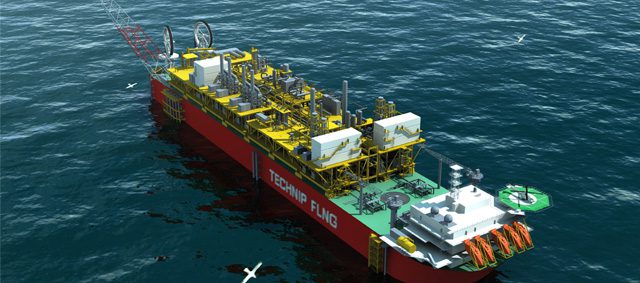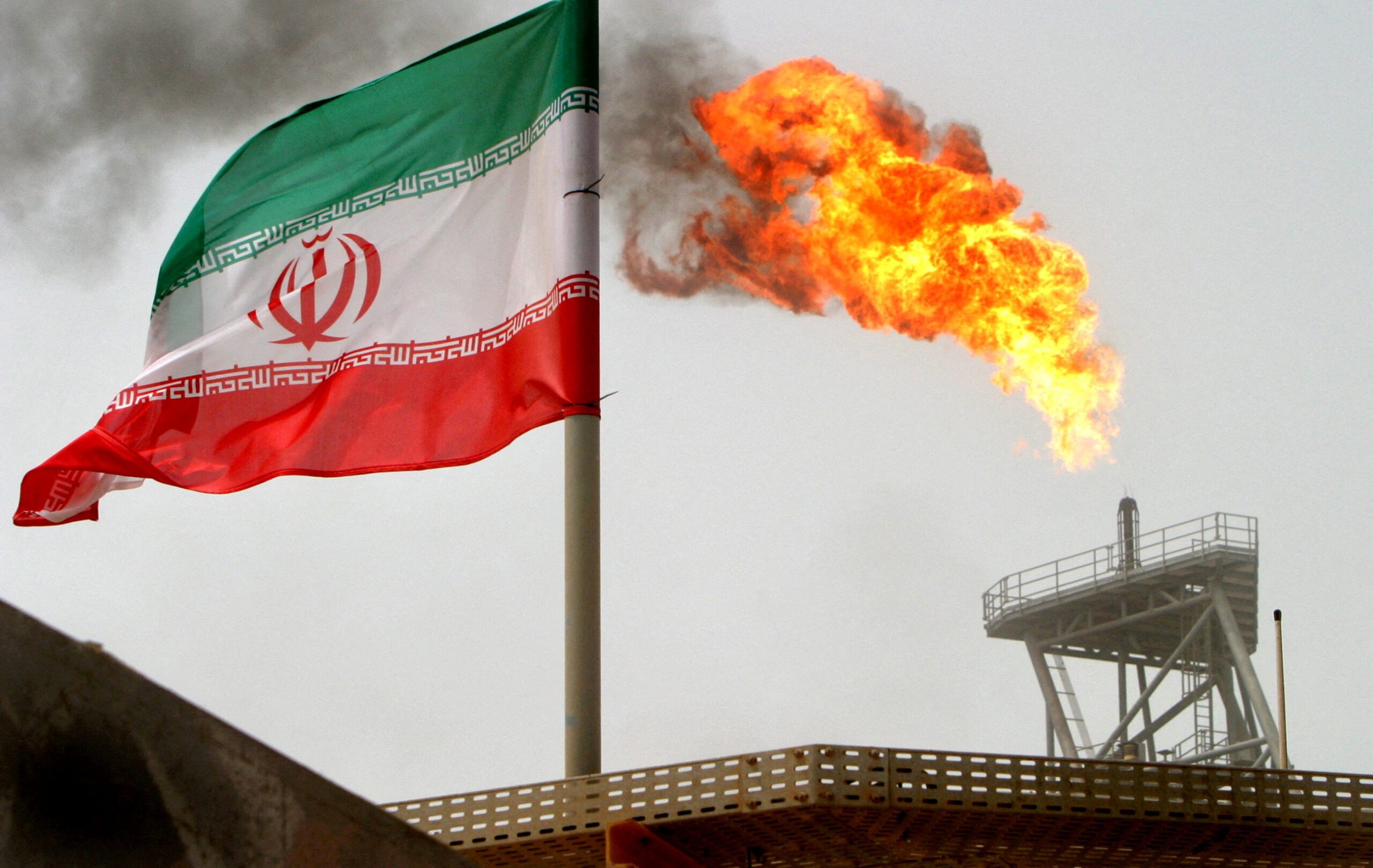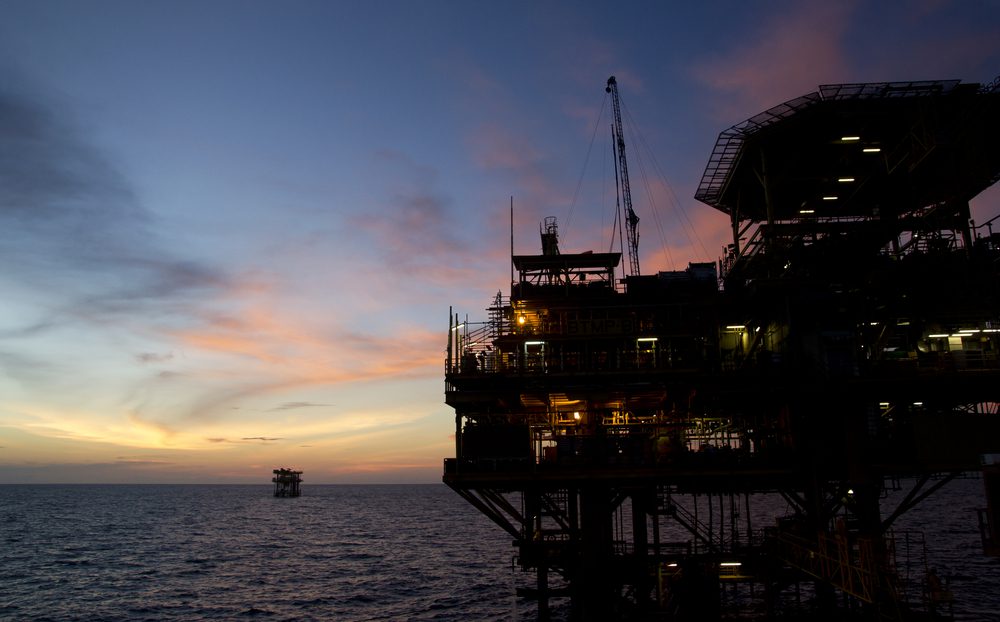Image: Technip
(Bloomberg) — Escalating costs to build liquefied natural gas plants on land in Australia, where energy workers earn the highest salaries in the world, are driving developers out to sea in search of billions of dollars in savings.
ExxonMobil Corp. plans to use the world’s largest ship to turn gas into liquid at an offshore field, eliminating the need for investment in pipelines and port facilities. Woodside Petroleum Ltd. is studying sea-based technology since ditching plans this month for an onshore plant for its Browse project.
After starting work on $180 billion in LNG terminals on land, developers are considering about $85 billion in floating projects to keep Australia competitive with suppliers in North America and East Africa. The floating export terminals will be built in Asian shipyards where labor costs are lower, including South Korea, the world’s biggest shipbuilder after China.
“A lot of people have been saying Australian LNG is now over, it’s going to be priced out of the market by U.S. LNG exports and competition from Canada and East Africa,” Mark Greenwood, a Sydney-based analyst at Citigroup Inc., said in a phone interview. “In our view, we are going to see continued investment in Australia, just a different sort.”
The engineering challenges are massive. Royal Dutch Shell Plc’s Prelude vessel, vying to be the first floating LNG facility in the world, will be as long as the Empire State Building and six times the weight of the largest aircraft carrier. Exxon proposes a vessel spanning 495 meters (1,624 feet), or 7 meters longer than the Shell plant.
$163,600 Salary
Australian oil and gas workers earn $163,600 a year on average, 35 percent more than employees in the U.S. and almost double the global average, according to a survey this year by recruiting company Hays Plc and Oil and Gas Job Search. That compares with $93,400 in the U.K., according to the study, which analyzed pay for engineers, geoscientists and related jobs.
Floating LNG may be almost 20 percent cheaper than building a project on land for Woodside and its partners in the Browse project, including Shell. Using three offshore vessels to produce the gas would cost an estimated A$35 billion ($36 billion), compared with a cost of A$43 billion for a new development on land, John Hirjee a Melbourne-based analyst for Deutsche Bank AG, wrote in an April 12 report.
That’s a cost of A$2.92 billion per million metric tons of output for a floating LNG project producing 12 million tons a year, compared with a cost of A$3.58 billion for a conventional plant, Hirjee said. Companies also can invest in floating LNG projects in phases rather than all at once, he said.
World Demand
Global LNG demand is estimated to grow to 400 million metric tons a year by 2020 from 240 million tons last year, Neil Beveridge, a Hong Kong-based analyst at Sanford C. Bernstein & Co., wrote in an e-mailed response to questions.
Of the 90 million tons a year of new projects that need to be approved globally in the next three years to satisfy LNG demand by the end of the decade, as much as a third of that may come from proposed floating LNG plants and expansions of onshore developments in Australia, he said.
Australia’s vast gas reserves and proximity to the largest import markets in Asia have put the nation in pole position to meet burgeoning demand in Japan, China and South Korea and become the world’s biggest exporter within the decade. The country has six onshore projects with long-term contracts under construction, with the first of those starting next year, in addition to the three already operating.
Costs Soar
The resources boom in Australia has inflated costs to the point where onshore developments are becoming too expensive, while the industry also faces increasing global competition.
Woodside’s onshore plant would have created as many as 8,000 jobs during construction and generated as much as A$50 billion in gross domestic product, according to the company’s website. The decision to scrap the proposal came a month after Australia posted its highest jobless rate in three years.
Woodside will return about $520 million to investors in dividends after dropping its Browse plan, saying earlier this month it will pay a special dividend of 63 cents a share and boost the payout ratio.
Three gas export projects have received permission to ship LNG from Canada’s Pacific Coast, with another in the U.S., on the Gulf Coast, according to data compiled by Bloomberg. Eni SpA and Anadarko Petroleum Corp. agreed last year to build the world’s second-largest LNG export plant in Mozambique.
Australia Exposure
While there is “upside” for future Australian LNG projects, global competition is rising, and buyers may want to diversify their supply sources away from Australia, Gavin Thompson, the Beijing-based head of Asia-Pacific gas and power research at Wood Mackenzie Ltd., said in a phone interview.
“There are a number of countries that have a very high level of overall exposure to Australia,” especially Japan and China, he said. “So how much more do they want?”
Petroliam Nasional Bhd., the Malaysian state-owned oil company known as Petronas, is moving ahead with plans to build its first floating LNG project due to start in 2015.
Exxon’s Scarborough floating LNG project may cost about $15 billion, and Shell’s Prelude development, already under construction, may cost $12 billion, Citigroup estimates.
Costs for LNG plants on land have escalated in Australia. The budget last year for Chevron Corp.’s Gorgon project jumped 21 percent to A$52 billion because of higher labor expenses and gains in the Australian dollar, and BG Group Plc’s Queensland Curtis LNG venture rose 36 percent to $20.4 billion.
Mozambique, U.S.
“The advantage is that a lot of the work can be done outside the high-cost environment of Australia,” Anthony Patten, a Perth-based partner and energy specialist at the law firm Allens, said in a phone interview. “We’ve enjoyed an enormous amount of activity over the past several years, but the costs of Australian projects are going to be high compared with emerging producers like Mozambique and the U.S.”
“Australia is a particular concern on cost inflation,” Matthias Bichsel, Shell’s global director of projects and technology, told analysts in November in New York. “Welders can apparently earn $250,000 a year.”
Shell, Europe’s largest oil company, is building the Prelude vessel at Samsung Heavy Industries Co.’s shipyard in Geoje, an island off the southeast coast of South Korea. At the peak of construction, the venture will employ 5,000 people.
Samsung Heavy, the world’s second-largest shipbuilder by order-book, after Hyundai Heavy Industries Co., employed about 12,000 at the end of last year earning an equivalent of about $70,000 a year on average, according to its annual report.
Prelude Start
When Prelude is complete, the ship will be towed to a site off Australia about 200 kilometers from the nearest point on the coast it will chill gas into liquid and transfer the fuel to vessel for transport to customers. The project is due to start production in about 2017.
“With floating LNG there is this massive jigsaw of technical and execution challenges,” Susan Gourvenec, a professor of the University of Western Australia in Perth and a specialist in offshore oil and gas engineering, said by phone. “You’ve got to encapsulate the production facilities and the personnel accommodation and the storage and offloading facilities all on this one unit, and it’s going to be moored offshore in deep water and harsh weather conditions.”
Exxon plans to decide whether to do its Scarborough floating LNG venture by 2015, with production starting by 2021, according to documents filed this month with the Australian government. The proposed venture would produce about 6 million to 7 million tons of LNG annually, Exxon said April 2.
Best Option
Floating LNG is the best option for Scarborough, “eliminating the need for infrastructure like LNG loading jetties, dredging of shipping channels, pipelines and site clearance,” Exxon said in an e-mailed response to questions.
Woodside, Australia’s second-largest oil producer, will consider cheaper alternatives for Browse, including a floating LNG plant, a pipeline to existing facilities in Western Australia or a smaller onshore plant, after concluding that the initial plan wasn’t commercially viable, the company said.
Shell believes its floating LNG technology is “the fastest, most economic and the best technical solution available for Browse,” Ann Pickard, chairwoman of the company’s Australian business, said in an April 12 statement.
Among other floating LNG projects proposed off Australia to tap Asian demand is Woodside’s Sunrise venture, which may cost $13 billion, Deutsche Bank said.
PTT Exploration & Production Pcl, considering floating LNG off northern Australia, expects to decide in the third quarter of 2013 whether to go ahead with engineering and design work to develop the Cash and Maple fields, its Australian unit said in an e-mail response to questions. GDF Suez SA and Santos Ltd. plan the Bonaparte floating LNG venture off Australia.
GDF Suez SA and Santos Ltd. plan the Bonaparte floating LNG development off northern Australia. That project would cost $8 billion to $10 billion, Greenwood of Citigroup estimates. PTT Exploration & Production Pcl is also considering a floating LNG development in the Timor Sea off northern Australia.
“It’s definitely a turning point with huge opportunities for Western Australia to channel all of that engineering expertise during the boom into a brand new industry and give it a head start” on the technology, Gourvenec said.
-James Paton, Copyright 2013 Bloomberg.

 Join The Club
Join The Club











